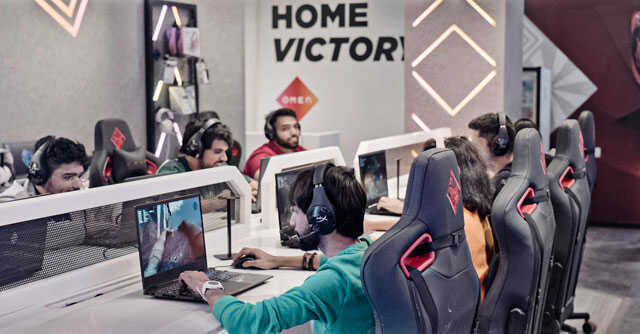
Electronics firms bank on offline stores to boost sales


Even as 2022 saw e-commerce beat offline retail in terms of the number of smartphones sold in India, electronics firms are stepping up their retail footprints in 2023. According to industry experts, weakening demand for electronic products has led firms to focus more on premium devices, which in turn requires more offline presence since consumers want to touch and feel such products before investing in them.
For instance, last month South Korean Samsung opened its largest experience store in North India in New Delhi to showcase premium products. The company also announced new gaming and smart home experience zones at its Samsung Opera House store in Bengaluru.
Samsung isn’t the only one either. PC maker HP opened eight gaming stores, called Omen Playground, across seven cities in India earlier this month. These stories will allow customers to try out gaming PCs and accessories and play games for hours. HP has plans to open 40 such stores in 2023.

“By launching these stores, we also hope to expand our retail footprint in India and increase our brand recall among the gaming community,” said Nitish Singal, Head of Personal Systems (Consumer) at HP India.
Several other brands, including OnePlus, Asus, and Realme are also planning to step up their focus on offline experience-driven stores this year. Apple’s flagship stores are also expected to open sometime in the first half of this year.
“In 2023, our strategy is to open stores in high-traffic locations that are easily accessible to customers. We believe we can tap into the growing demand for retail services in both urban and suburban markets by offering a wide range of products and a convenient shopping experience,” said Arnold Su, Business Head, Consumer and Gaming PC, System Business Group at Asus India. The company opened its third experience store in New Delhi last month.

A OnePlus spokesperson said the company’s focus in 2023 will be on extending premium experience across product categories to offline spaces through its OnePlus experience stores.
According to analysts, premium products allow higher margins for brands. For instance, in smartphones, the premium segment only accounted for 11% of smartphone shipments in 2022 but its revenue share was 35%, according to a January report by market research firm Counterpoint Research.
Gaming and high-end notebooks like Apple MacBooks in the consumer segment have remained immune to demand slump. For instance, premium notebooks grew 14.6% YoY in the consumer segment, even as the overall notebook segment declined by 8.4% in Q4 2022, according to data from the International Data Corporation (IDC). Offline channels accounted for 66% of PCs shipped in India.

Prachir Singh, senior research analyst at Counterpoint, noted that premium products are expected to remain ahead of other price bands this year too.
“Purchase of premium products usually takes place in stores. As we see devices becoming costly, users would want to experience them first. Having more such stores is making a lot of sense for brands and also for people in retail,” said Faisal Kawoosa, chief analyst and founder of techARC, a market research firm. He added that 65% of smartphones are still sold offline.
Counterpoint’s Singh noted that the proliferation of online channels seen in the last two years because covid-19 changed consumer behavior. “The probability of selling a premium device is a lot higher in offline stores than online. We will see a renewed effort from all brands in offline space this year,” he added.

According to data from Counterpoint, 52% of smartphones were sold through online channels in 2022, up from 41% in 2019. “Growth momentum will be seen in both channels, but offline will grow at a much faster rate. They will have an increased share over 2022,” said Singh.
